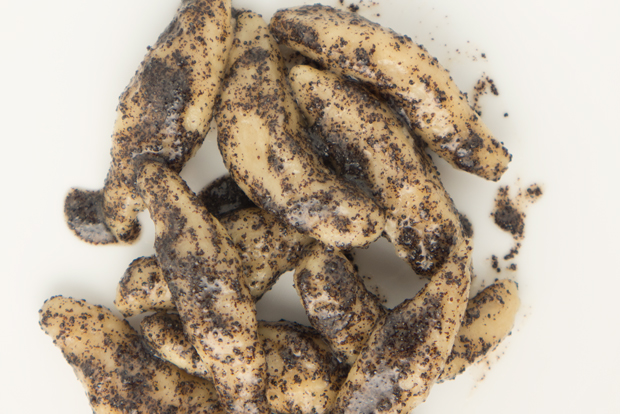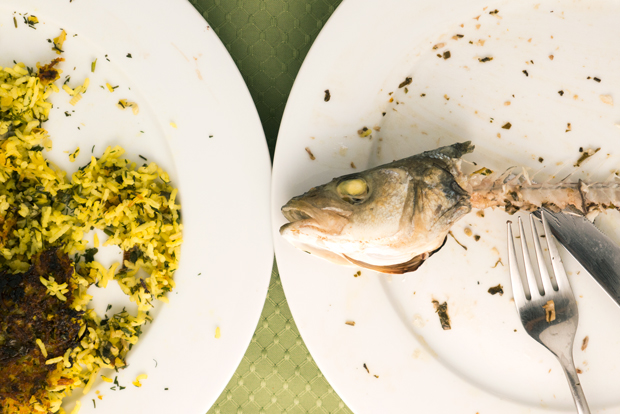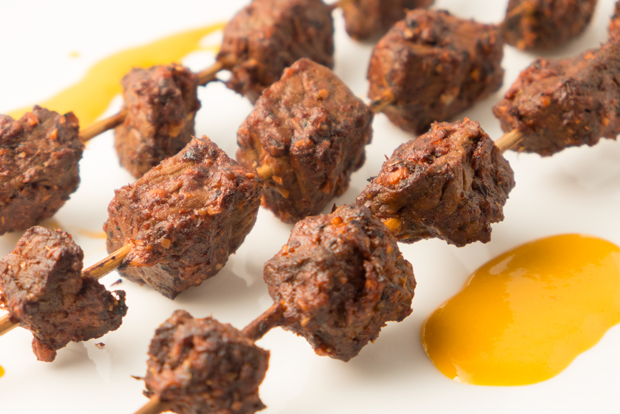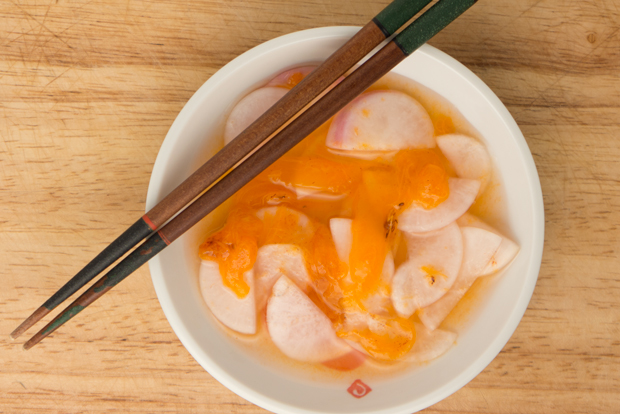posted by
Samar on
May 2, 2017

From bagels to pastrami, the Jewish immigrants who came to America, primarily New York, in the early 20th century brought over many tasty Eastern and Central European culinary traditions that persist to this day, and which I thoroughly enjoyed during the two decades or so that I lived in New York. So on an annual trip to Vienna to attend a conference I was not particularly interested in that city’s famed apfelstrudel and brezels, excellent though they were. Nor the sachertorte (too sweet for me). What did catch my attention were the mohnstrudel and mohnbeugel, pastries packed with poppy seeds (mohn in German). I had not encountered these before and they quickly became my favorite thing to eat in Vienna. But I soon realized that Austrians are a bit obsessed with poppy seeds, and put them in everything from eierlikör (eggnog) to today’s featured dish: mohnnudeln (noodles with poppy seeds).
posted by
Samar on
March 23, 2017
For my readers in and around Oxfordshire I just wanted to give you a heads-up (i.e., blatantly advertise!) that I’ll be teaching a Korean cookery class on April 12th at Sophie’s Cookery School. This is a wonderful ‘pop-up’ school run by Sophie Grigson and her team offering classes on everything from baking to Vietnamese cookery. I hope to see some of you there!
posted by
Samar on
March 19, 2017

A wonderful recent article in the New York Times on the traditional dishes served on Persian/Iranian New Year’s Day, called Nowruz and falling this Tuesday 21st March, reminded me of the first time I made Persian food. I thought there was a mistake in the recipe for ghormeh sabzi, sometimes called Iran’s ‘national dish’, as the idea of adding entire bunches of parsley and cilantro (coriander) to a stew seemed rather extreme. After all, much as I love these herbs, I’m more used to thinking of them as garnishes rather than the main ingredient. But I’ve learnt since that first foray that in Persian cuisine herbs are treated like any other vegetable. Which is perhaps also why I simply had to try the recipes associated with the aforementioned article, especially the fish stuffed with herbs, pomegranate molasses and walnuts! Incidentally, Persian New Year is celebrated not just in Iran but through much of Central Asia, from Afghanistan to Uzbekistan, and even by the Parsis of the Indian Subcontinent.
posted by
Samar on
February 25, 2017

Peruvian-style anticucho with aji amarillo sauce
I suspect that without the discovery of the New World the rest of the planet would still be subsisting on grass. From tomatoes to chile peppers and potatoes to chocolate, not to mention quinoa, South America, and the Andean region in particular, has had a disproportionately important and enriching influence on our diet. But it hasn’t been an entirely one-way street. The conquistadors who brought (stole?) these culinary riches back to Europe and disseminated them to Asia and elsewhere, also contributed a few things like garlic and beef that are now commonly used in that part of the world. And, more recently and perhaps less balefully, Peruvian cuisine has been influenced by repeated bouts of immigration from countries such as Japan, specifically Okinawa, and China, giving rise to distinctive cuisines known as nikkei and chifa, respectively. Indeed, Japanese of Peruvian descent are one of the most successful and influential ethnic groups in modern Peru (Fujumori, a former president of Peru, is the most (in)famous example of such a nikkeijin).
posted by
Samar on
January 29, 2017

Growing up in Mumbai I always thought Indians were unique in their obsession with pickles. Every meal features at least one type, and not infrequently 3 or 4 different kinds. Certainly, the regional varieties are astounding, so much so that there is an entire hit TV show dedicated to them. But it turns out that plenty of other cuisines take their pickles just as seriously. And no wonder. Pickling has long been one of the ways in which food is preserved. This is especially true in Japan where fermented and pickled foods take center stage. The latter are collectively known as tsukemono (漬け物), literally “pickled things”. Tsukemono can involve everything from daikon to ginger, and carrots to squid. As for the pickling itself, rice vinegar and sugar play key roles, but rice bran (for a type of tsukemono known as nukazuke), miso (misozuke) and sake lees (kasuzuke) are also commonly used.







